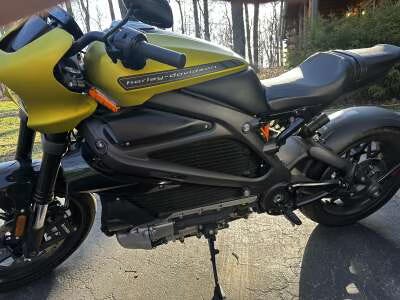How Electric Motorcycles Are Changing the Future of Two-Wheel Mobility
How Electric Motorcycles Are Changing the Future of Two-Wheel Mobility
Introduction
Electric motorcycles are no longer a futuristic concept—they're already reshaping the motorcycle industry. With improvements in battery efficiency, charging infrastructure, and performance capabilities, e-motorcycles are emerging as a real alternative to internal combustion engines (ICE). From urban commuters to high-performance racers, these silent, efficient machines are carving out a permanent place on the road.
The Rise of the Electric Two-Wheeler
The global shift toward electrification, driven by climate goals, urban pollution, and advances in battery tech, has finally reached the motorcycle sector. While electric cars dominated the early wave, electric two-wheelers are catching up quickly. Companies like Zero Motorcycles, Energica, Harley-Davidson (with the LiveWire brand), and even startups from China and India are pushing the limits of electric mobility.
Early Entrants: From Niche to Serious Players
1. Zero Motorcycles (USA): Founded in 2006, Zero built one of the first production e-motorcycles. Models like the SR/F now boast up to 140 ft-lbs of torque and top speeds exceeding 120 mph.
2. Energica (Italy): Known for high-performance bikes like the Ego+, used in MotoE, the electric version of MotoGP.
3. Harley-Davidson LiveWire: Initially met with skepticism, the LiveWire now forms its own brand, targeting tech-forward urban riders.
4. NIU & Super Soco (China): Leading urban mobility brands in Asia, offering smart and affordable electric scooters and motorcycles.
Tech Innovations Driving the Market
1. Battery Range & Fast Charging: Premium bikes now use 14–22 kWh battery packs with DC fast-charging allowing 80% in 30–45 minutes.
2. Regenerative Braking: Converts kinetic energy back into battery power.
3. Smart Connectivity: OTA updates, GPS tracking, and mobile app integration.
4. Torque Control: Instant torque with no gears or clutch improves ease and performance.
Environmental & Urban Impact
Electric motorcycles reduce carbon emissions, noise pollution, and reliance on fossil fuels. Cities like Paris, London, and Delhi incentivize adoption with tax breaks and infrastructure support. Many delivery services and government fleets are converting to electric two-wheelers to meet climate targets.
Rider Experience: What's Different?
E-motorcycles are nearly silent, reducing noise fatigue but raising concerns about pedestrian safety. Maintenance is lower with no oil changes or valve jobs. Torque delivery is instant, and the weight distribution from the battery often improves balance and handling.
Challenges & Market Limitations
1. High Price Tags: Many premium models cost $15,000–$25,000.
2. Range Anxiety: Ranges are typically between 80–150 miles.
3. Charging Infrastructure: Still catching up in many regions.
4. Battery Degradation: Though improved, batteries still degrade over time.
Racing Ahead: E-Motorsports
MotoE World Cup (Dorna) uses Energica Ego Corsa on MotoGP tracks. The Isle of Man's TTXGP electric class and e-bike drag races are pushing tech boundaries. Electric bikes shine in 0–60 mph contests due to their torque advantage.
Market Outlook
The global electric motorcycle market is projected to exceed $30 billion by 2031. Asia-Pacific dominates in volume, while Europe and North America focus on innovation and performance. Key brands to watch include Damon, Ryvid, Pursang, Yadea, Ola Electric, and Ultraviolette.
Classic Conversions
Custom builders are converting ICE bikes into electric models, preserving aesthetics while achieving zero emissions. Examples include Honda CB750 cafe racers, Yamaha R1s, and Harley Softails.
Community Response
While ICE purists miss engine sound and vibration, younger and urban riders value tech, low noise, and sustainability. Online forums and ownership clubs are driving engagement.
The Road Ahead
Future innovations include solid-state batteries, AI-powered ride modes, battery-swapping networks, and solar-charging options. Major OEMs like Honda, Yamaha, and BMW are expected to launch full electric lines by 2026–2028.
Conclusion
Electric motorcycles blend performance, sustainability, and smart technology into a compelling package. While barriers like range and price still exist, the industry is moving fast. The ride ahead is electric—and it’s just getting started.
By Rafael Benavente

